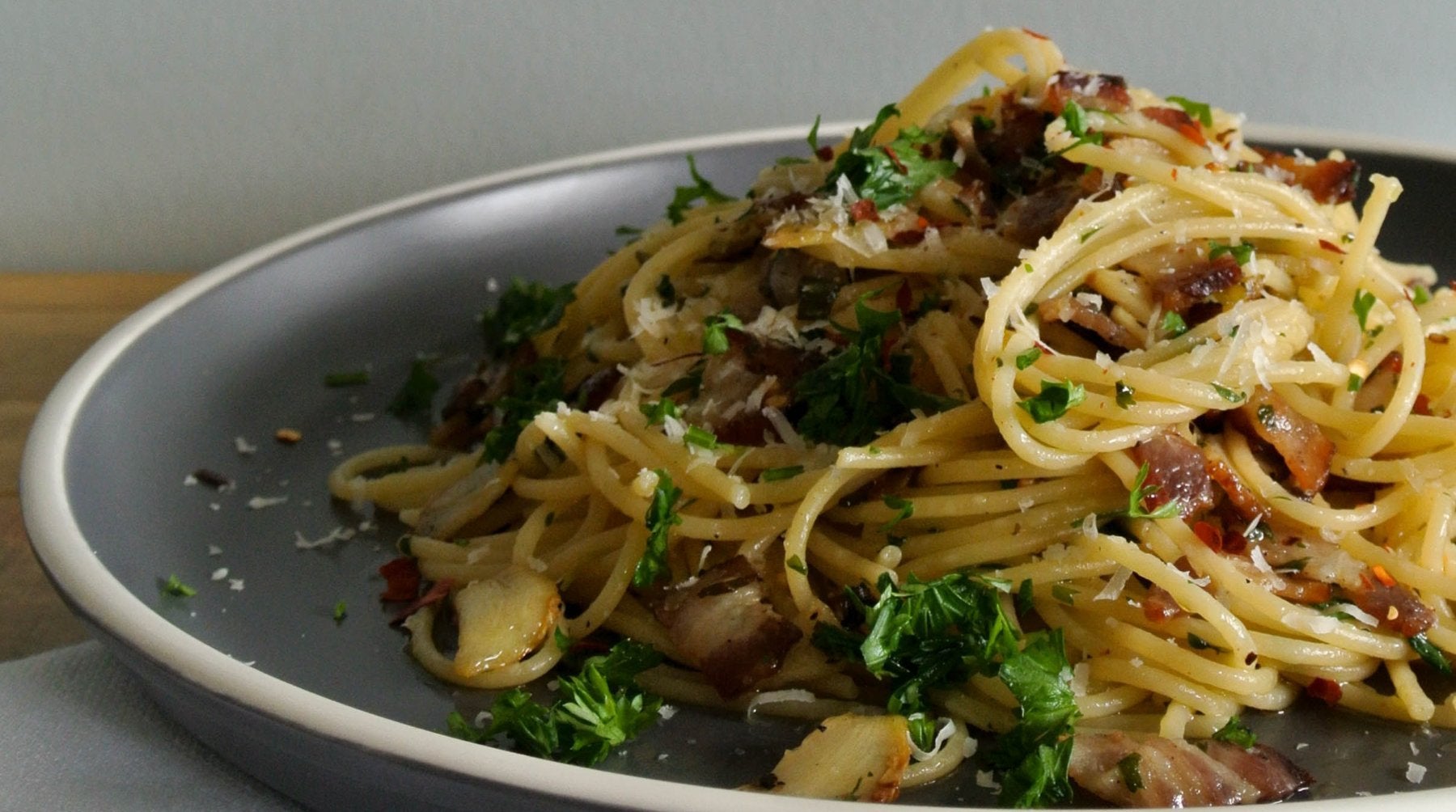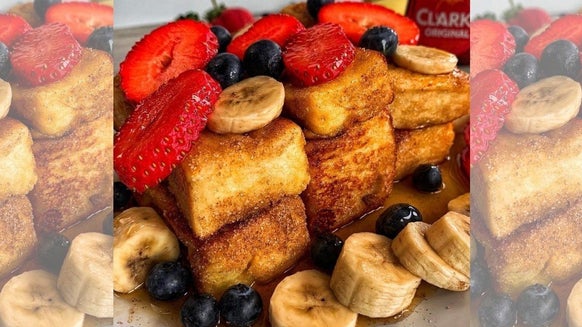Low GI Foods — What Makes a Food Low-Glycaemic Index?

There are plenty diet trends that come and go, but the glycaemic index, or GI diet, has been around for years and has proven to be effective. Following a low GI diet requires making healthy carbohydrate choices that can lead to many health benefits, including weight loss. Read on to see if the low GI diet is right for you.
In this article, you’ll find:
What is GI?
Why follow a low GI diet?
How to switch to a low GI diet
What impacts a GI rating?
List of low GI foods
List of high GI foods
Benefits of a low GI diet
Easy swaps for a low GI diet

What is the GI?
The glycaemic index is a measure of the body’s blood sugar response to a type of food. When we eat foods that contain carbs, our body breaks them down into glucose that ends up in our blood stream.
Foods that digest easily and cause more dramatic spikes in blood sugar have a higher GI rating, while high-fibre, slow-digesting foods have a lower impact on blood sugar and lower GI rating. For example, white bread would have a higher GI rating than whole grain bread.
Foods with GI scale rating of 70 or more are considered “high”, and those 55 or below are considered “low”.1 However, the glycaemic index of a food does not reference the specific quantity – for example, watermelon has a high glycaemic index, but due to its water and fibre content, it does not greatly impact blood sugar in typical serving sizes.
Why follow a low GI diet?
People usually reference the glycaemic index of foods when they are trying to follow an overall healthy diet, lose weight, or control their intake of less healthy carbs. Following the GI diet style can help improve blood sugar control, which impacts many other aspects of health.
More frequent consumption of high GI foods, which are typically highly processed, high carbohydrate foods, can lead to weight gain and insulin resistance. 1 Another concern about high sugar foods that are low in fibre is their impact on heart health.1
How to Switch to low GI
While the GI rating of some foods is marked on food labels, it isn’t easy to know the exact GI rating of every single food. If you want a reference point, a Glycaemic Index Database is maintained by Sydney University. The glycaemic index is not a requirement on food labels at this time, but many labels of healthy foods may boast a low GI rating.
If you are trying to switch to a lower glycaemic index eating style, stick with high fibre fruits, vegetables, and whole grains, and less refined, white products. It may take some planning and list making. For example, before you go shopping you can consult the glycaemic index database and make a list of the foods you like that fall in to the lower GI category.
What Impacts GI rating of foods
While the GI rating of a food depends on how it’s broken down into glucose in your body, the portion size and other foods you eat alongside can change the way it’s digested. Eating pure sugar on an empty stomach has a greater effect on raising blood sugar quickly than having some sugar mixed into another food during a full meal. Fat, fibre, and protein foods slow digestion, which also slows the absorption and blood sugar response of carbohydrate foods.
Determining the GI rating of a food isn’t as simple as how sweet it tastes — for example, apples are a low GI fruit while watermelon has a much higher rating. It takes some time and research to learn the best choices in food group.

Low GI foods
When making a low GI meal plan, you can use the following list of foods from low end of the glycaemic index (less than 55).
| Category | Food | Glycaemic Score |
| Apples | 32 | |
| Fruits2 | Peaches | 28 |
| Cherries | 22 | |
| Barley | 20 | |
| Grains2 | Bran Cereals | 43 |
| Brown Rice | 45 | |
| Chickpeas | 33 | |
| Vegetables/Legumes2 | Kidney Beans | 15 |
| Mushrooms | 10 | |
| Broccoli | 10 | |
| Milk | 32 | |
| Dairy Products and Alternatives2 | Soy Milk | 31 |
| Greek Yoghurt | 14 | |
| Dark Chocolate | 49 | |
| Other Foods2 | Pizza | 36 |
Foods to Avoid
These are the foods with a high glycaemic index.
| Category | Food | Glycaemic Score |
| Cantaloupe Melon | 65 | |
| Fruits2 | Papaya | 58 |
| Pineapple | 66 | |
| Rye Bread | 78 | |
| Grains2 | Short Grain White Rice | 72 |
| White Bread | 70 | |
| Tortillas | 55 | |
| Beetroot | 69 | |
| Vegetables/Legumes2 | White Potatoes | 62 |
| Pumpkin | 75 | |
| Rice Cakes | 82 | |
| Other Foods2 | Honey | 58 |
| Pretzels | 83 |
Benefits of low GI diet
The University of Sydney provides several claims based on research of the following a diet with low GI foods.2 A summit was held in 2015 to discuss the research to support these claims, and scientists are still working on finding the best ways to implement a low-GI diet for health benefits.1
1. Blood sugar control
Many worldwide associations recommend using the GI scale to help people choose healthier carbohydrate foods that will have less of an impact on their blood sugar.2 It can be a part of meal planning or the entire basis for their diet strategy.
2. Cholesterol
Many studies have supported that foods that are high in fibre can impact cholesterol levels. Because many low GI foods are also high in fibre (like whole grains), they can be good choices for those trying to use their diet to improve their cholesterol levels.
3. Weight Management
While there are lots of studies that discuss weight loss success, choosing foods with a low GI rating will help to improve satiety by preventing major spikes and falls in blood sugar levels. One study showed that low GI foods combined with a moderately high-protein diet was an effective method of weight loss.2
However, pizza, chocolate, and whole milk are on the low GI list, but can be high in calories and lead to weight maintenance or gain in large portions. Consider all aspects of your diet when trying to lose weight.
Easy changes for a lower GI diet pattern
Breakfast: bran cereal instead of sweetened rice cereal, and whole fruit instead of juice Choose an apple for a morning snack with a handful of almonds instead of biscuits Lunch: have a burger without a bun and green beans on the side instead of fries For an afternoon snack, try a Greek yogurt instead of crisps Dinner: replace white rice with quinoa, choose a healthy protein (chicken, salmon), and any steamed vegetable
Remember, including foods that contain protein, fibre, and healthy fats can help slow the digestion of carbohydrates and decrease the impact that moderate or high GI foods might have on your blood sugar if eaten on their own.
Take home message
The glycaemic index can be an excellent tool to help determine the impact that a carbohydrate food will have on your blood sugar. This makes it useful for those with health conditions. Many low GI foods are also very healthy choices — high in fibere, water, vitamins, and minerals. However, the low GI diet should only be a part of a healthy eating pattern. Following just the glycaemic index with no concern of the portion size or calorie content can still lead to weight gain and future health issues.

Claire is a Registered Dietitian through the Academy of Nutrition and Dietetics and a board-certified Health and Wellness Coach through the International Consortium for Health and Wellness Coaching. She has a Bachelor of Science in Biology and a Master’s degree in Clinical Dietetics and Nutrition from the University of Pittsburgh.
Talking and writing about food and fitness is at the heart of Claire’s ethos as she loves to use her experience to help others meet their health and wellness goals.
Claire is also a certified indoor cycling instructor and loves the mental and physical boost she gets from regular runs and yoga classes. When she’s not keeping fit herself, she’s cheering on her hometown’s sports teams in Pittsburgh, or cooking for her family in the kitchen.
Find out more about Claire’s experience here.





